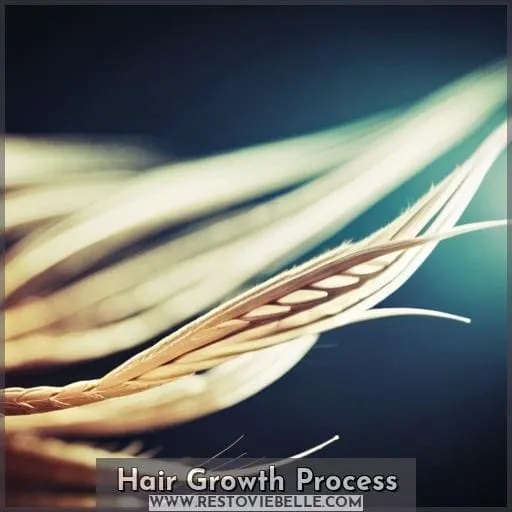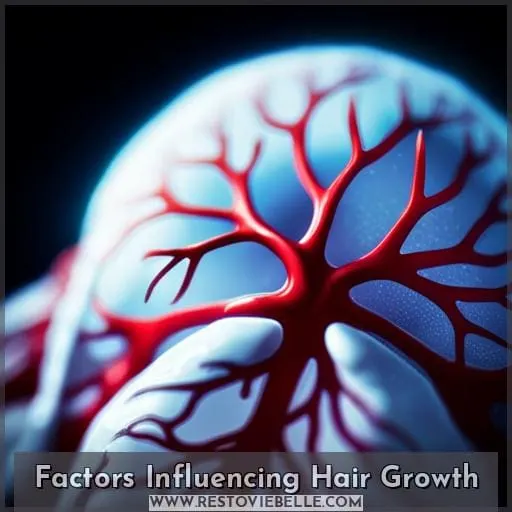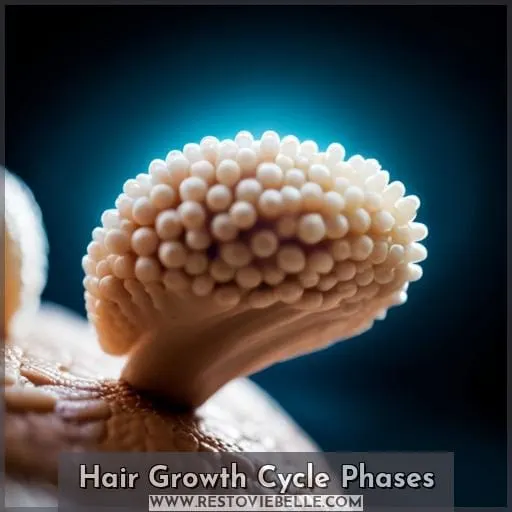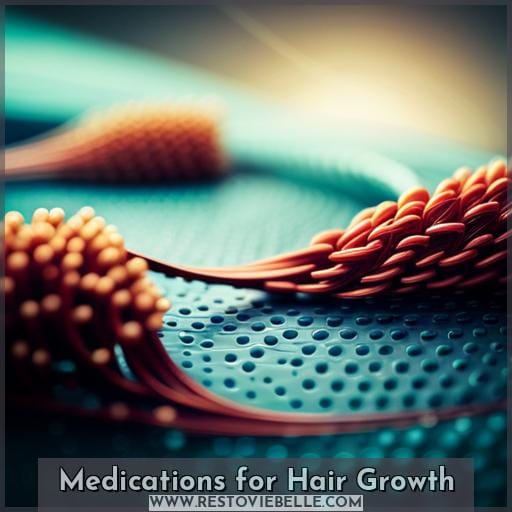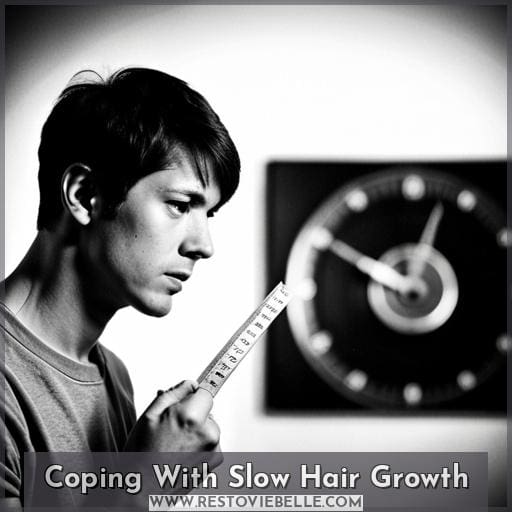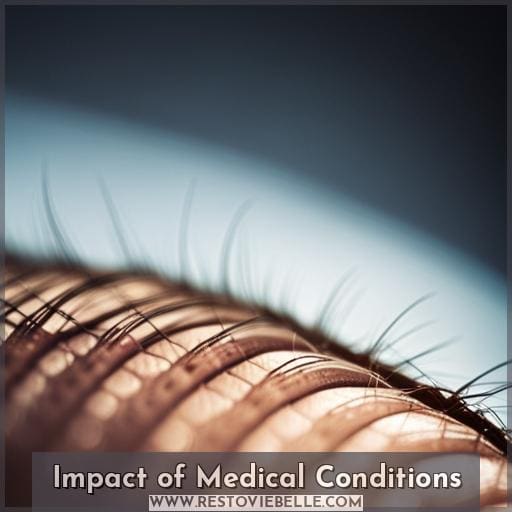This site is supported by our readers. We may earn a commission, at no cost to you, if you purchase through links.
 Embark on a journey into the enigmatic realm of hair growth, where strands unfurl secrets and science reigns supreme. Imagine the allure of reclaiming control over your locks’ destiny – a quest to comprehend the cadence of growth that wields the magic of weeks, months, and years.
Embark on a journey into the enigmatic realm of hair growth, where strands unfurl secrets and science reigns supreme. Imagine the allure of reclaiming control over your locks’ destiny – a quest to comprehend the cadence of growth that wields the magic of weeks, months, and years.
Brace yourself, for this voyage unveils the mystique surrounding hair’s rapid evolution, catering to an innate longing for ascendancy over your tresses.
Indulge your curiosity as we decode the intricacies of this natural phenomenon, tapping into the symphony of biological mechanisms and unveiling the tempo of growth that resonates with each passing week, month, and year.
Cast aside mere conjecture, as we delve into the very fabric of hair growth, painting an informative canvas that embraces the profound. From the elusive factors steering the course of growth to the dynamic interplay of hormones, stress, and time, prepare to traverse a narrative that resonates with the pursuit of liberation, power, and mastery over the very essence of your being.
Table Of Contents
Key Takeaways
- Hair growth varies among individuals due to factors such as genetics, ethnicity, and hormonal balance.
- The hair growth cycle consists of anagen, catagen, and telogen phases, all collectively affecting growth patterns.
- Nutrition plays a vital role in supporting hair growth, with nutrients like protein, vitamins (A, C, E), iron, and zinc being crucial.
- Scalp health, circulation, and stimulation through massage and cleansing contribute to promoting the optimal hair growth.
Hair Growth Process
Delving into the intricate journey of your locks, you’ll witness the dynamic cycle that propels strands through stages of renewal and rest, impacting their length and vitality over time.
The hair growth process is governed by a meticulously orchestrated series of events. The primary growth stage, known as the anagen phase, is where your hair follicles actively multiply root cells and construct the hair shaft.
This phase lasts for several years and determines the ultimate length your hair can achieve.
Following the anagen phase, the telogen resting phase arrives, providing your hair with a pause before shedding and renewal. Throughout this cycle, follicle nutrition plays a pivotal role. Blood vessels supply essential nutrients required for growth.
The hair growth rate, averaging between 0.5 to 1.7 cm per month, collectively results in about 6 inches of growth annually. Understanding this intricate cycle empowers you to make informed choices regarding maintaining the length and health of your hair.
Hair Growth Rate Overview
Transitioning from the intricate process of hair growth, let’s delve into the fascinating world of hair growth rates. Hair growth patterns exhibit remarkable variations, yielding diverse milestones in hair length.
The pace at which your hair grows is influenced by factors such as genetics, ethnicity, and even changing seasons.
-
Hair Growth Per Week: On average, hair grows about 0.3 to 0.4 mm per day, totaling approximately 2.5 mm per week.
-
Hair Growth Per Month: In a month, this translates to roughly half an inch (1.25 cm) of hair growth. That’s equivalent to six inches (15 cm) over a year.
-
Hair Growth Per Year: Throughout a year, you can expect your hair to grow around six inches (15 cm), although individual variations occur.
-
Ethnicity and Growth: The role of ethnic background is notable. For instance, individuals of African descent might experience slower growth at around 0.2 inches (0.5 cm) per month. Meanwhile, those of Asian descent might see faster growth, reaching up to 0.8 inches (2 cm) per month.
-
Seasonal Growth Effects: Notably, hair growth isn’t constant year-round. Peak growth tends to occur during warmer months, such as March. Conversely, growth might slow down during colder periods due to potential follicular stress.
Understanding these dynamics of hair growth rates empowers you to appreciate the journey of your locks, celebrating the progress and embracing the uniqueness of your hair’s growth story.
Factors Influencing Hair Growth
Curiously, consider the various elements impacting the pace of your hair’s journey to its desired length. Your hair growth is a complex interplay of factors that determine its rate and quality.
From scalp health to hormonal balance, several factors influence this process. Here are key determinants:
-
Scalp Health: A well-nourished scalp creates an optimal environment for hair growth. Regular cleansing and exfoliation promote circulation and remove dead skin cells, facilitating hair growth.
-
Dietary Impact: Your diet supplies the building blocks for hair growth. Nutrients like protein, vitamins (especially A, C, and E), and minerals like iron and zinc are essential for healthy hair development.
-
Hormonal Balance: Hormones play a pivotal role. Androgens, such as testosterone, can impede hair growth, while estrogen can stimulate it. Hormonal imbalances can disrupt the growth cycle.
Environmental factors, genetic predisposition, and the intricate stages of hair growth all contribute to the intricate process.
By maintaining scalp health, adopting a balanced diet, and addressing hormonal equilibrium, you can potentially optimize the rate of your hair’s growth journey.
Hair Growth Cycle Phases
Imagine a garden, where each flower goes through a dance of life in three distinct acts: the vibrant bloom, the graceful pause, and the gentle release. Just as petals unfold and rest, so does the cycle of your crowning glory, from the energetic flourishing to the serene intermission and the tranquil shedding.
The Anagen phase is the star of this botanical ballet, representing the active growth stage of your hair. During this period, your hair can grow around 0.3 to 0.4 mm a day, totaling about 2.5 mm in a week, half an inch in a month, and six inches a year. This phase can last anywhere from 2 to 6 years, and the longer it goes on, the longer your hair can potentially become.
Following the Anagen performance, Catagen gracefully ushers in a slowing of growth, a transitional phase that lasts a few weeks.
Then comes Telogen, the intermission, where hair rests for approximately 3 months before the gentle shedding process begins, allowing new growth to take its place.
Understanding this natural cycle can empower you to optimize your hair’s health. Scalp care, proper nutrition, and stress management can all play pivotal roles in the performance of your hair’s life cycle.
So, tend to your garden wisely, and let your hair flourish with the benefits of a well-nurtured Anagen phase.
Maximizing Hair Growth
To optimize the growth potential of your locks, focus on maintaining a nourished scalp and adopting a nutrient-rich diet.
A regular scalp massage not only feels luxurious but also stimulates blood flow to hair follicles, promoting hair growth.
Incorporate nutrient-rich foods like omega-3 fatty acids from fish, vitamins found in dark greens, protein-packed legumes, biotin-rich grains, and selenium-loaded nuts to support healthy hair growth.
Consider seasonal adjustments in your routine, as hair growth tends to peak in March and slow during colder months.
Lifestyle factors such as managing stress and avoiding crash diets can also influence hair health.
Debunking Hair Growth Myths
Exploring the realm of hair growth involves delving into the efficacy of Hair Growth Oils and Supplements. You will discover the scientific insights behind these methods, understanding how they impact the rate at which your hair grows over weeks, months, and years.
Hair Growth Oils
Delving into the world of hair growth oils, you’ll find that massaging rosemary or coconut oil onto your scalp not only stimulates it but also encourages healthier follicles. These natural remedies offer a promising addition to your hair care routine, providing nutrient benefits that can enhance hair growth.
To maximize effectiveness, consider your hair type compatibility and apply these oils gently with proper scalp massage techniques.
Supplements
Unlock the secret to enhancing your journey toward vibrant and healthy locks with these supplements that can invigorate your scalp and promote a flourishing crown of beauty. Opt for nutrient-rich choices such as biotin, vitamins D and E, and omega-3 fatty acids, which have shown potential in supporting hair growth.
While clinical evidence varies, herbal alternatives like saw palmetto and ginseng are capturing attention. Keep in mind that supplement effectiveness relies on factors like dosage and individual response.
Medications for Hair Growth
Debunking common myths about hair growth sheds light on the true factors influencing hair length.
Now, let’s explore effective ways to accelerate hair growth through medications.
Topical treatments, prescription options, and herbal remedies have garnered attention for their potential to stimulate hair regrowth.
These treatments often target specific causes of hair loss, such as hormonal imbalances or inflammation.
While topical solutions like minoxidil have gained popularity for their success in some cases, it’s crucial to be aware of potential side effects and the duration of treatment.
Prescription options like finasteride are also available for certain types of hair loss, but they require careful consideration under medical supervision.
Herbal remedies, although more natural, should be approached with caution as their effectiveness varies.
Understanding these treatment approaches, their potential benefits, and possible side effects empowers you to make informed decisions on your journey towards mastering healthy and vibrant hair growth.
Coping With Slow Hair Growth
Coping with slow hair growth can resemble chasing a moving target, yet comprehending the triggers and adopting proactive strategies might push you towards your desired outcome.
While waiting for results, consider these beneficial approaches:
-
Scalp Massage Techniques: Regular massages stimulate blood circulation to the scalp, promoting hair follicle health.
-
Nutritional Support: A diet rich in vitamins, minerals, and protein fosters strong hair growth from within.
-
Patience Tips: Understand that hair growth is a gradual process; avoiding stress and impatience helps the journey.
-
Hair Masks and Lifestyle Changes: Use nourishing hair masks to enhance scalp health and think about lifestyle adjustments for overall well-being.
By intertwining scalp care, proper nutrition, patience, and holistic strategies, you can potentially overcome challenges of slow hair growth. Remember, perseverance often brings the most rewarding results on the journey to flourishing locks.
Impact of Medical Conditions
Exploring the realm of medical conditions reveals how health factors intricately influence hair development.
Medical treatments like chemotherapy can dramatically affect hair growth by targeting rapidly dividing cells, including hair follicles.
Autoimmune disorders, such as alopecia areata, lead to hair loss as the immune system mistakenly attacks hair follicles.
Thyroid conditions disrupt hormonal balance, potentially causing hair thinning or loss.
Scalp infections interfere with the hair growth cycle, resulting in temporary shedding.
Diagnosing these conditions often involves scalp biopsies and blood tests to identify underlying causes.
Understanding the impact of medical conditions on hair growth underscores the importance of tailored hair-care routines and seeking appropriate treatments to address the root causes of hair-related issues, granting you mastery over your hair’s health and growth journey.
Hormones, Stress, and Aging
Transitioning from the impact of medical conditions, let’s explore the intricate web of hormones, stress, and aging, all of which significantly influence your hair’s growth journey.
Hormonal balance is key, as fluctuations can trigger hair loss. Stress, a modern-day nemesis, can disrupt this equilibrium, ultimately leading to the shedding of hair.
Chronological aging also plays its part. As the years pass, hair follicles gradually shrink, and the pace of growth slows down, resulting in the thinning of strands.
Both genders are susceptible to hormone-related hair loss, such as androgenetic alopecia, often manifesting as male and female pattern baldness.
To counteract these effects, a multi-faceted approach is necessary. Managing stress through relaxation techniques goes a long way in maintaining hormonal equilibrium.
Furthermore, specific hair growth treatments are available to target issues rooted in hormonal imbalance.
Embracing a healthy lifestyle overall, characterized by balanced nutrition, regular exercise, and adequate sleep, can further alleviate the impacts of aging, stress, and hormonal shifts on your crowning glory.
Conclusion
Embarking on the fascinating journey through the intricacies of hair growth, you’ve uncovered the secrets behind its steady progression. With an average rate of about half an inch per month, hair growth weaves a tale of complexity influenced by genetics, age, hormones, and more.
Delving into the dynamic phases of the growth cycle, you’ve grasped the significance of a nourished scalp and debunked common myths about oils and supplements. Amidst medical interventions, comprehending the impact of medical conditions, hormones, stress, and aging on growth offers a holistic perspective.
In your pursuit of luscious locks, remember: the science behind hair growth is as varied and vibrant as the strands themselves.

